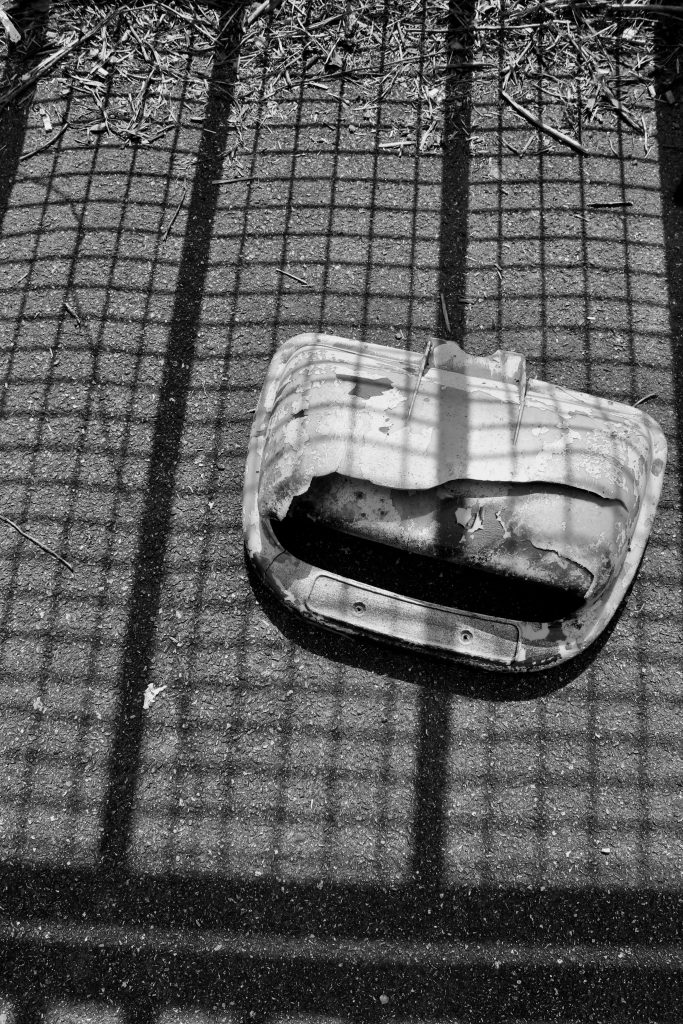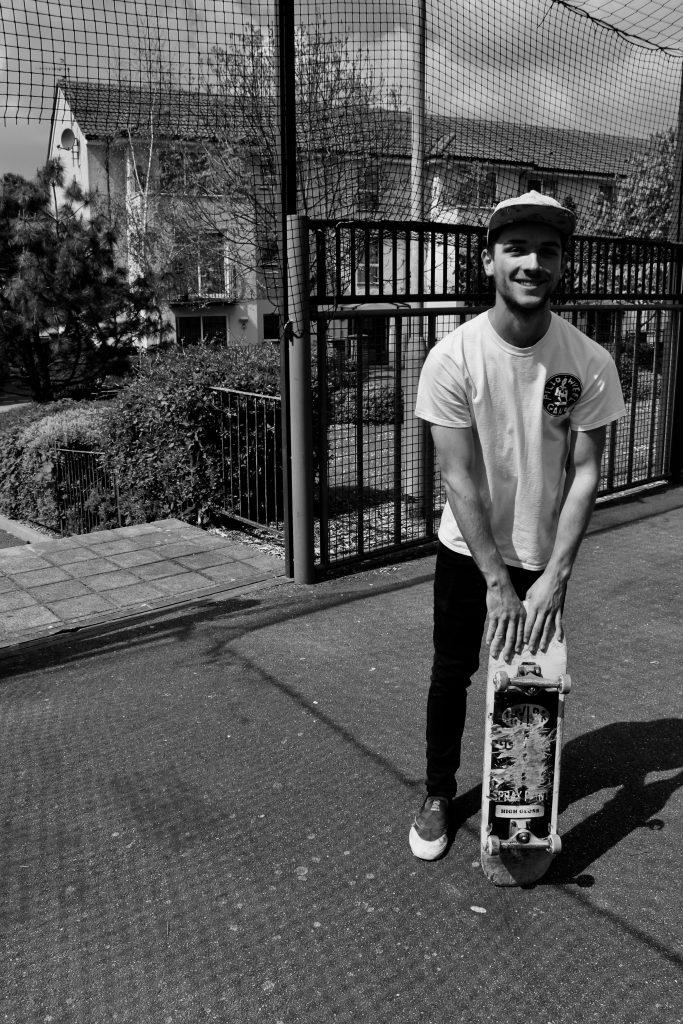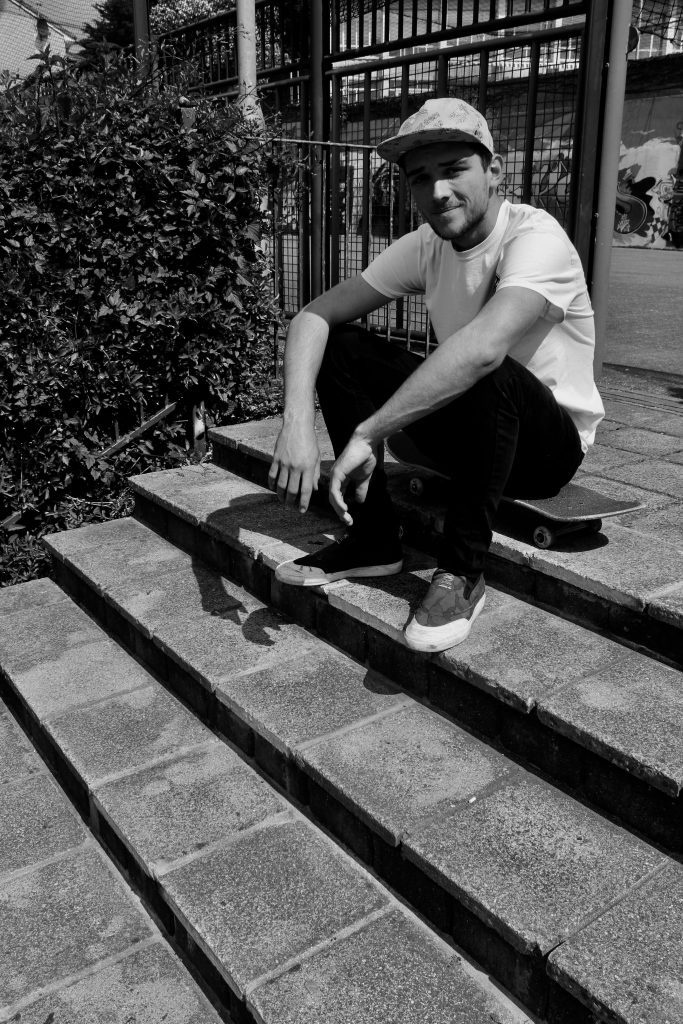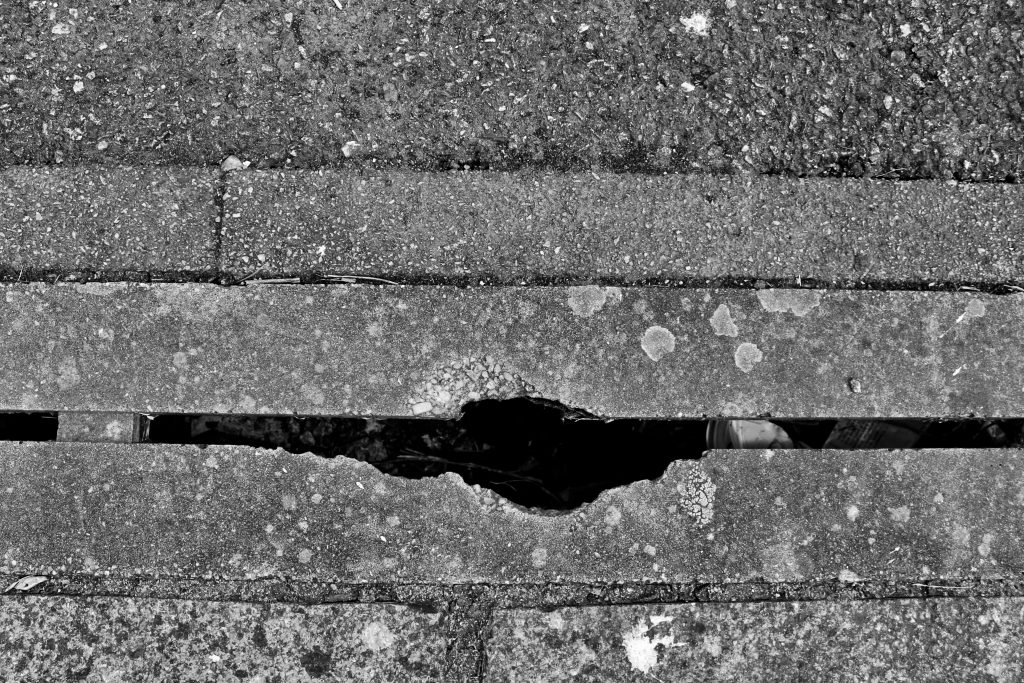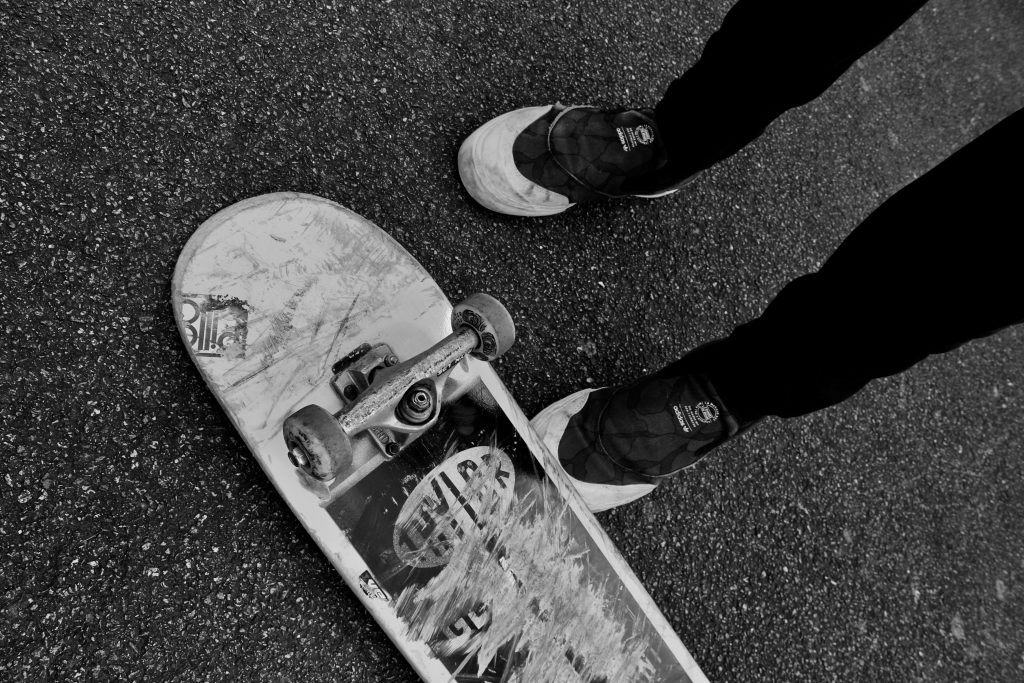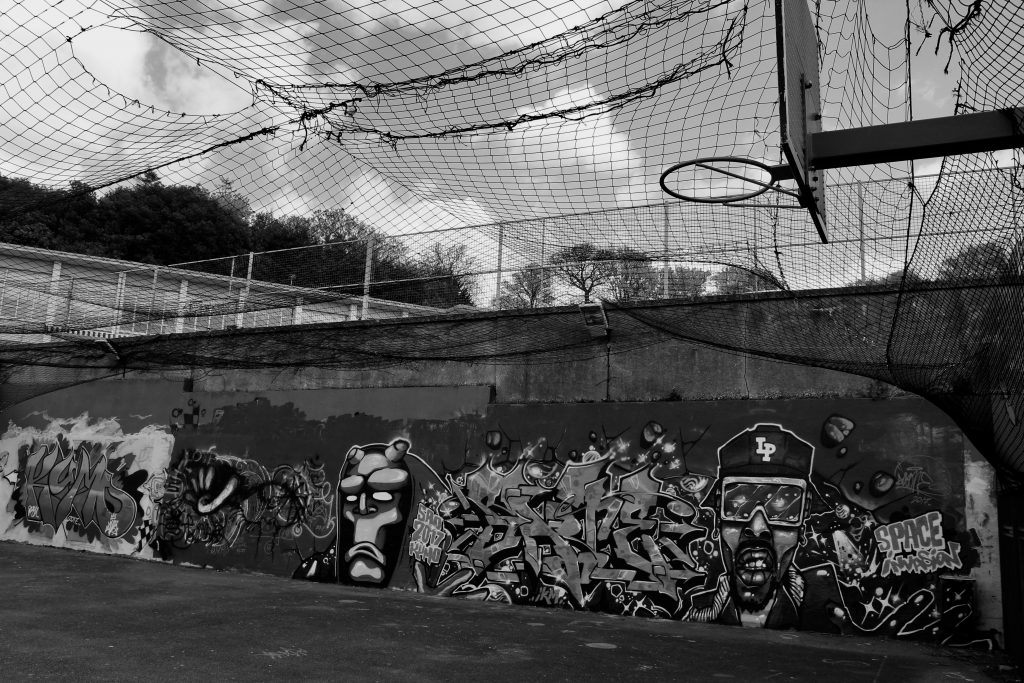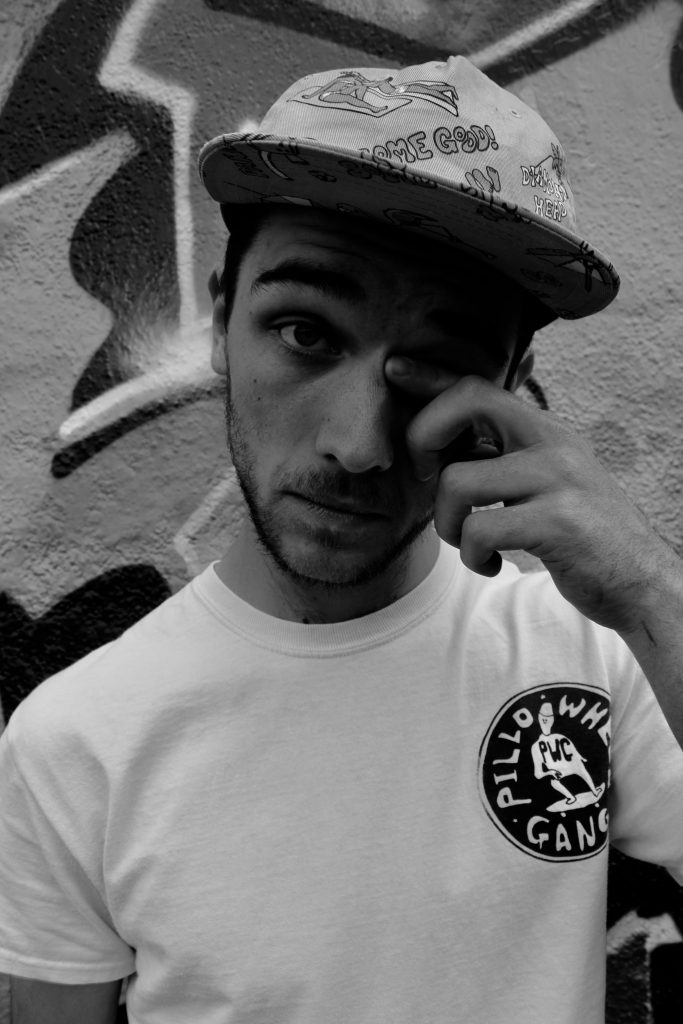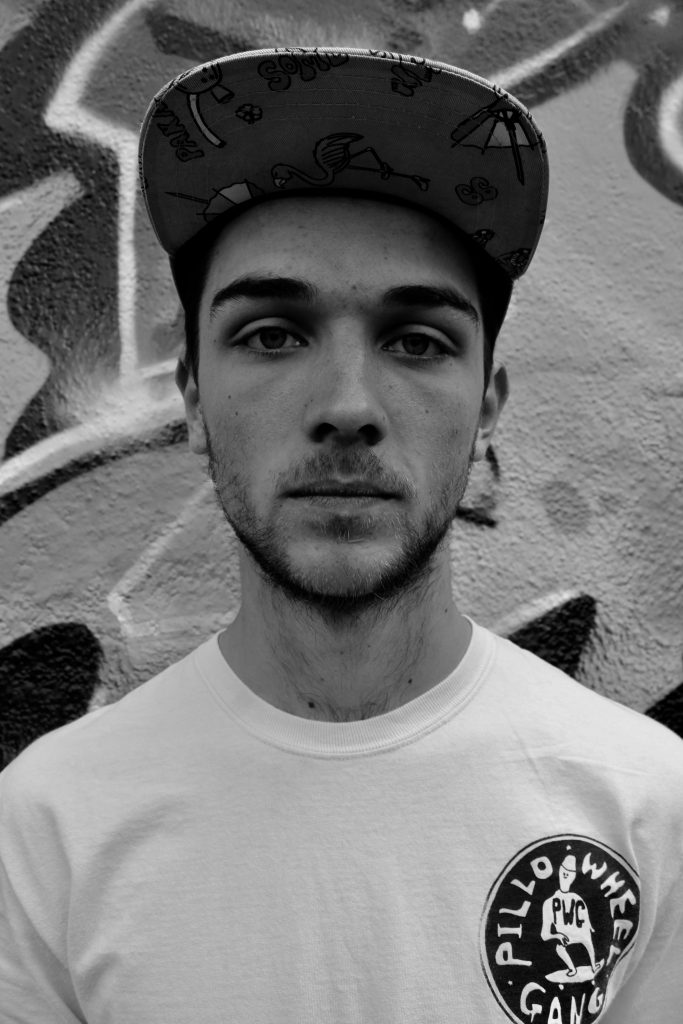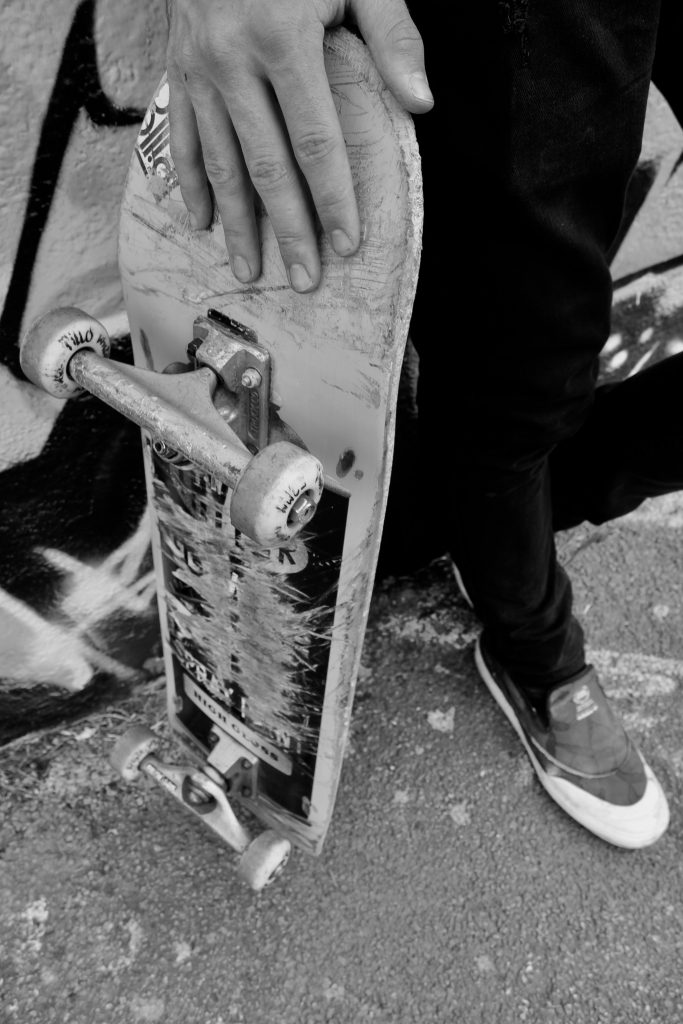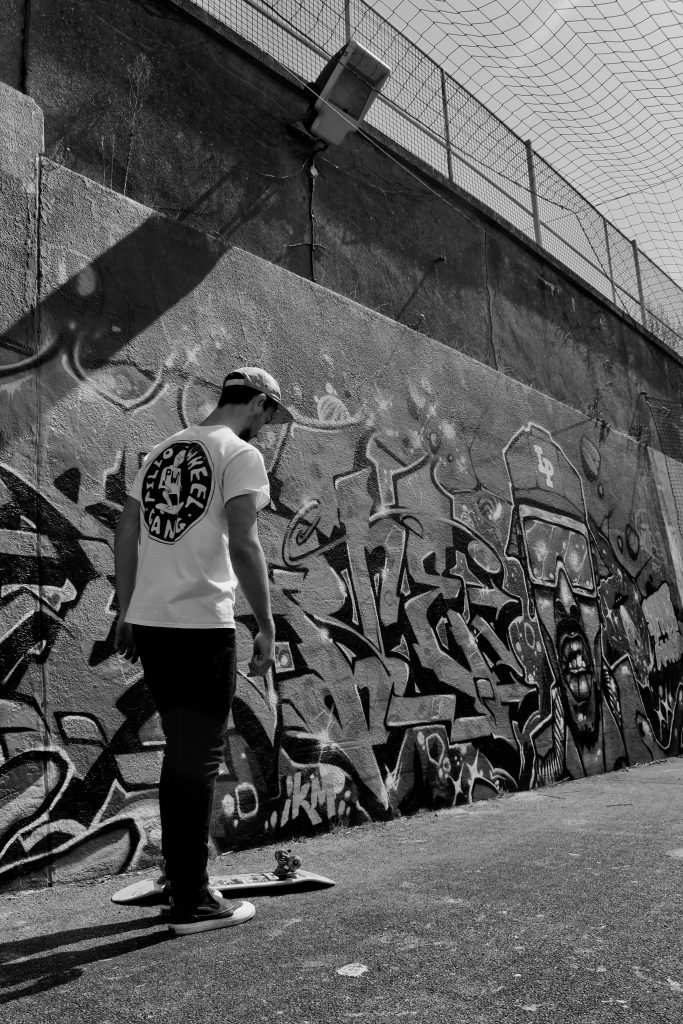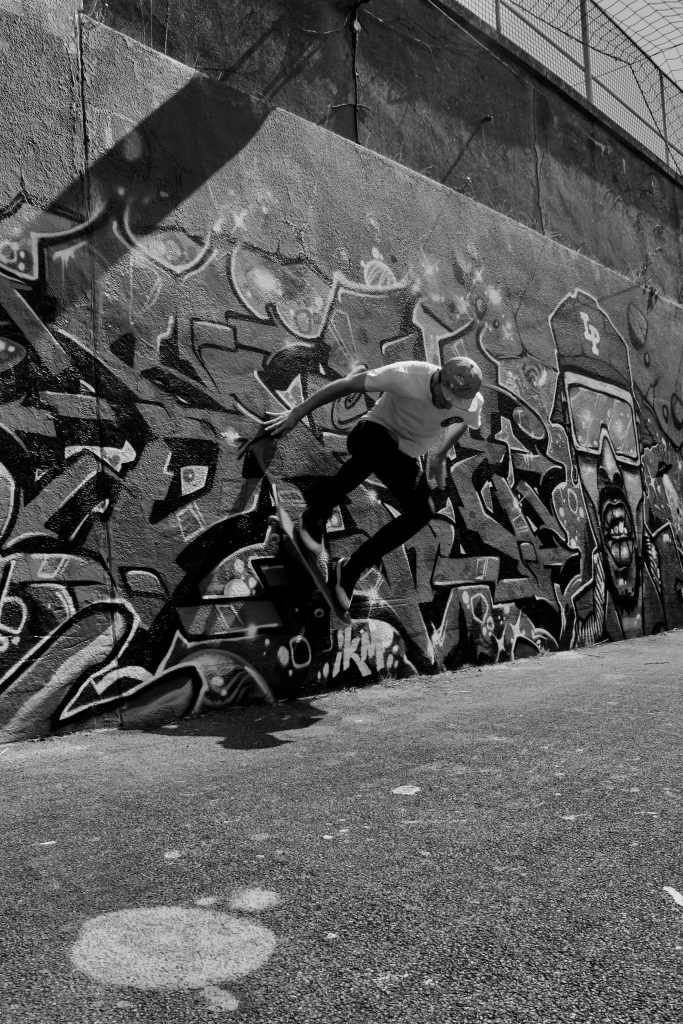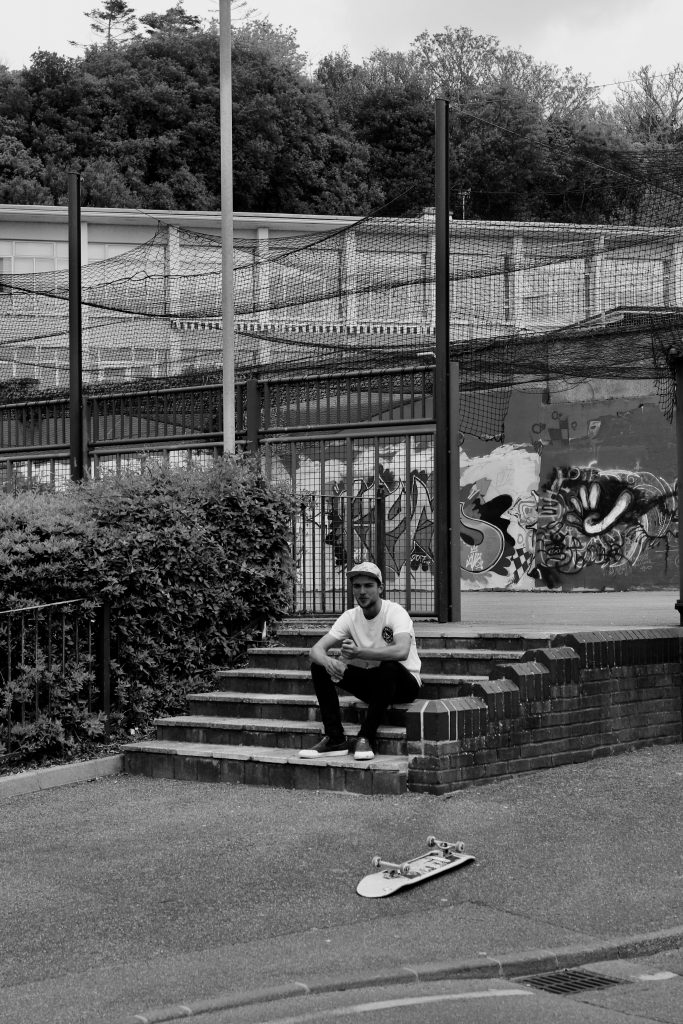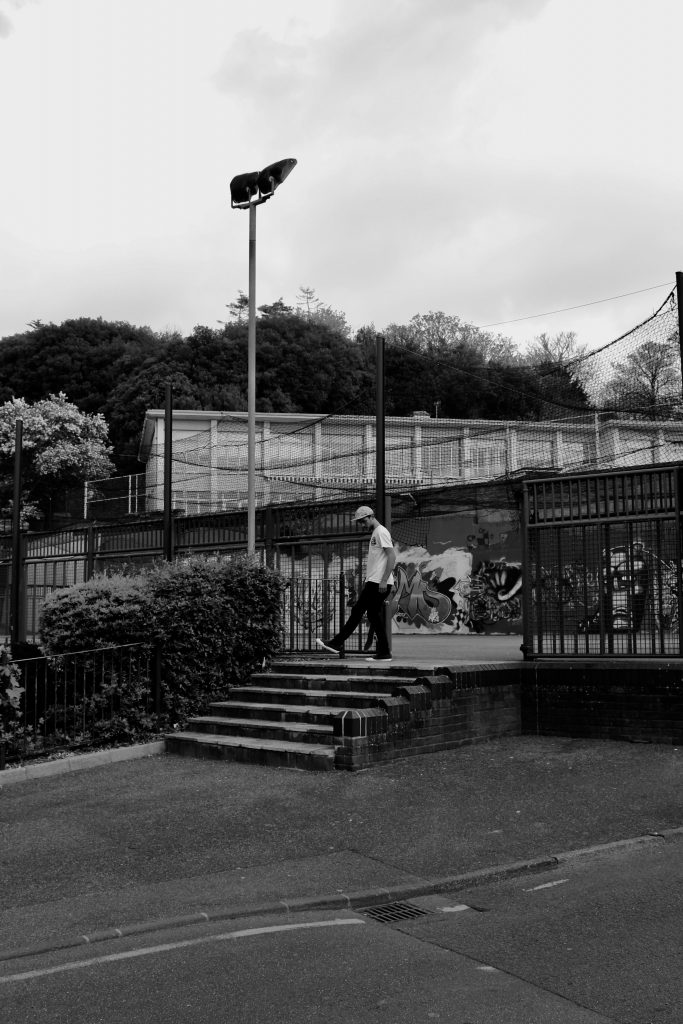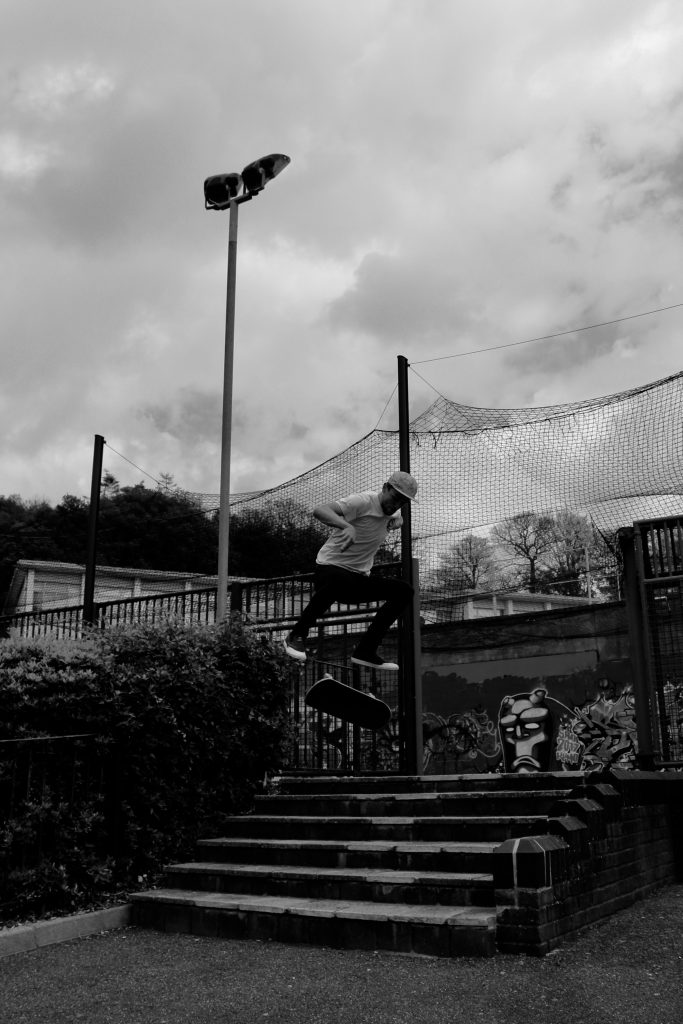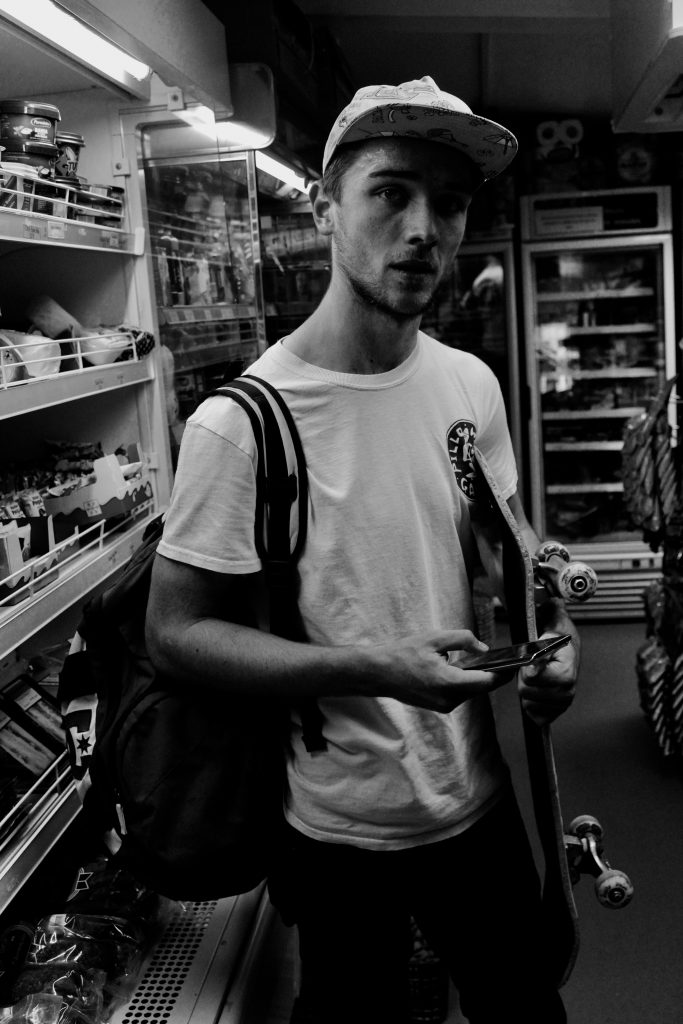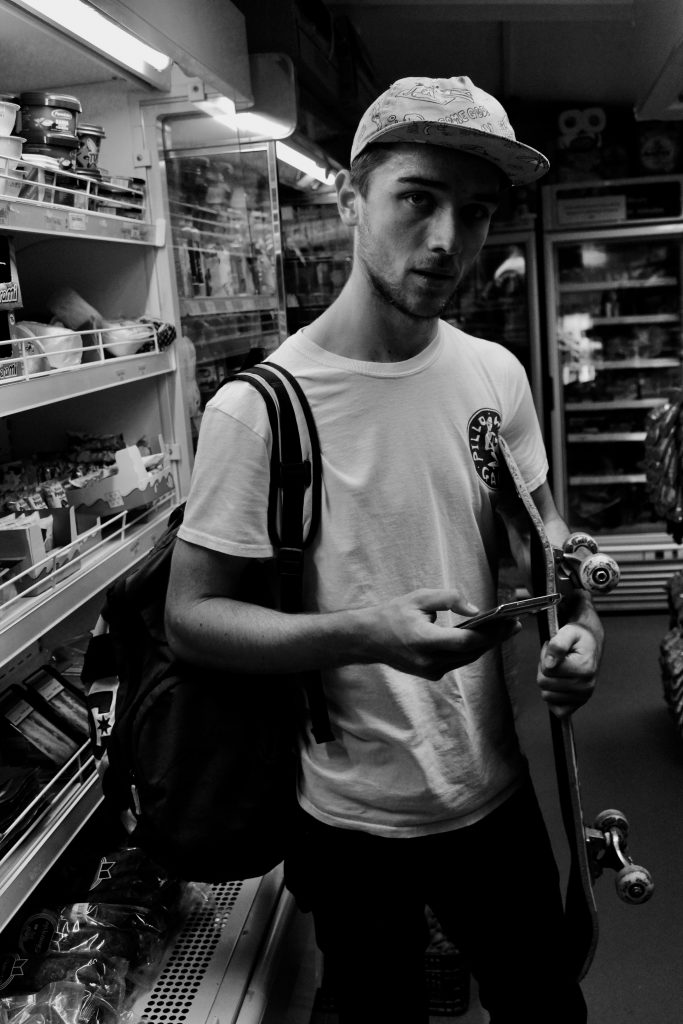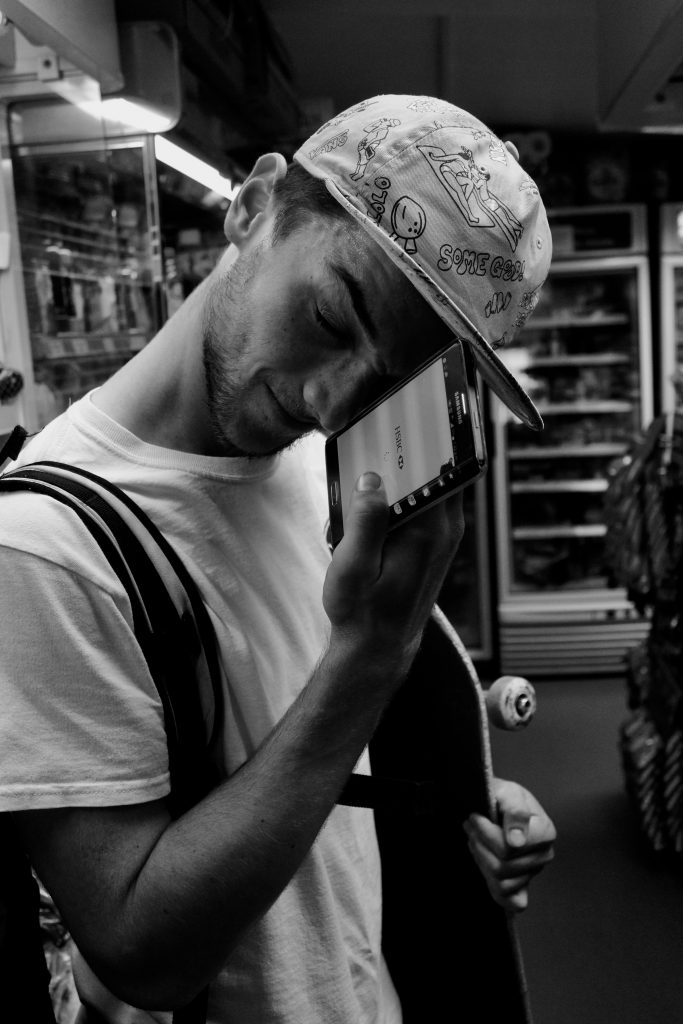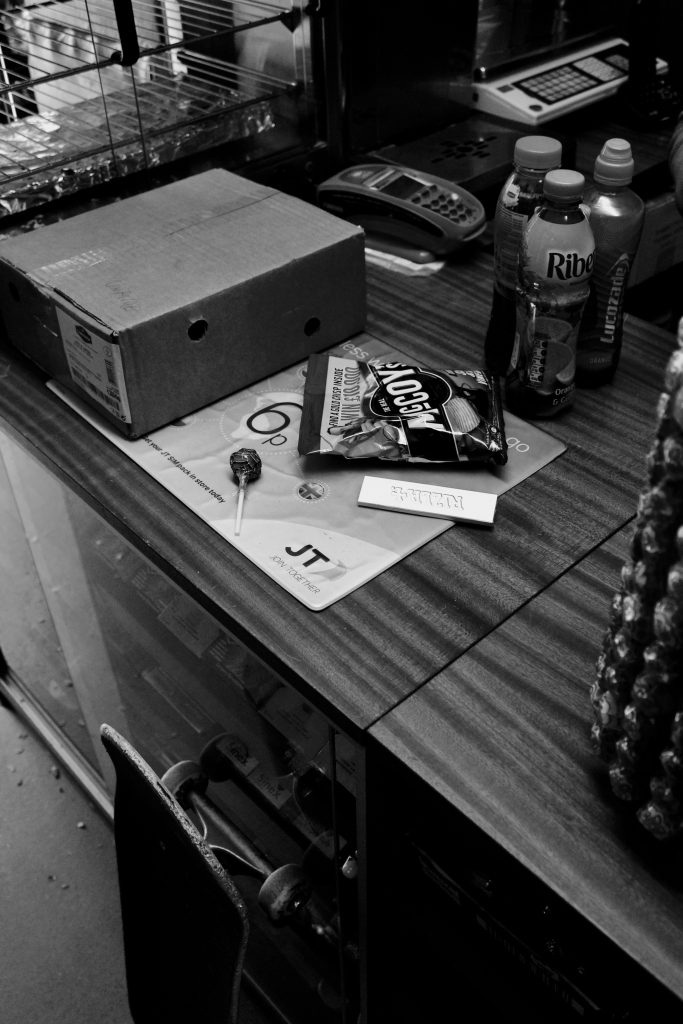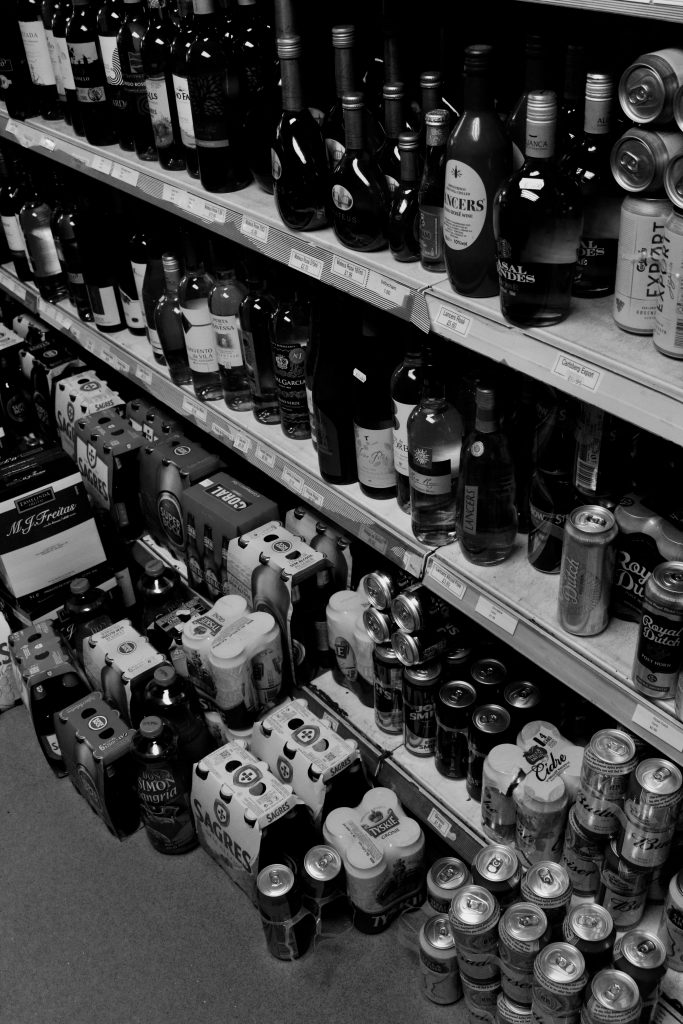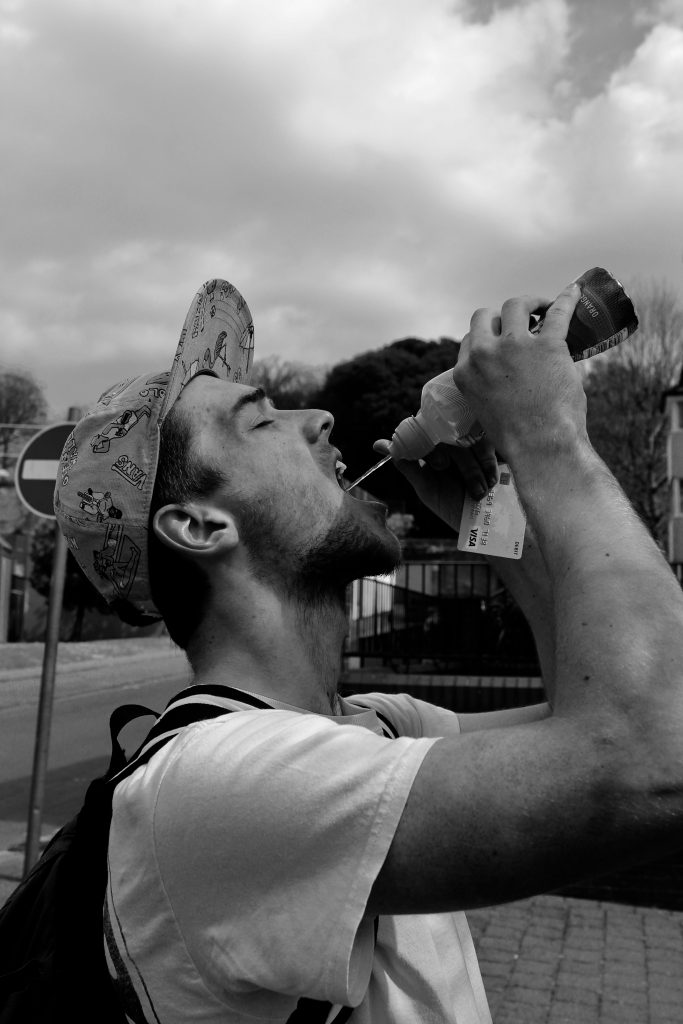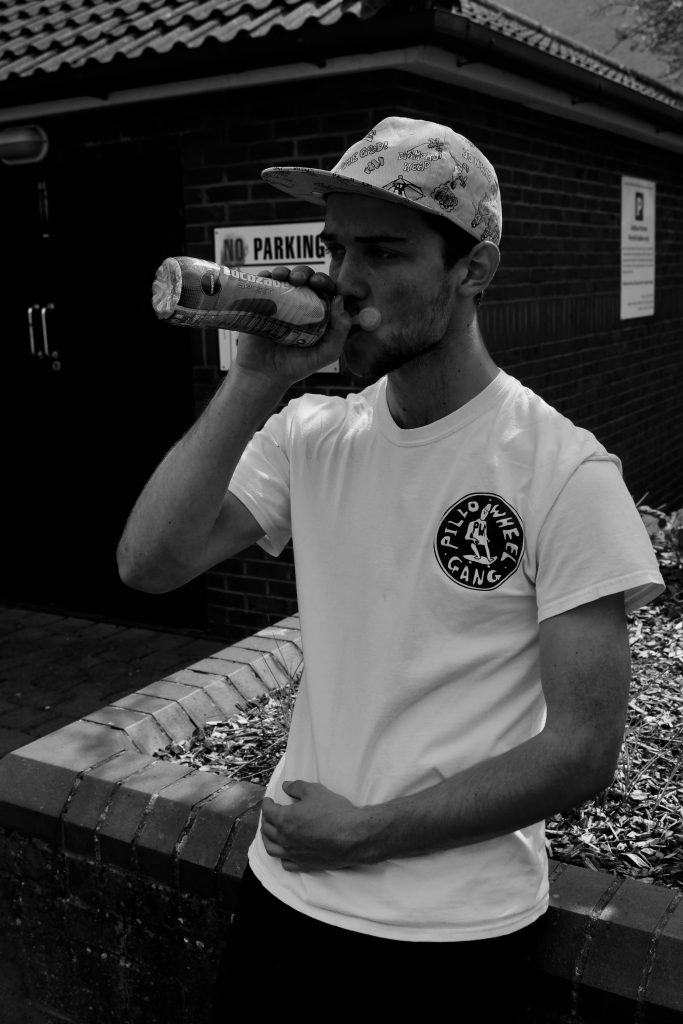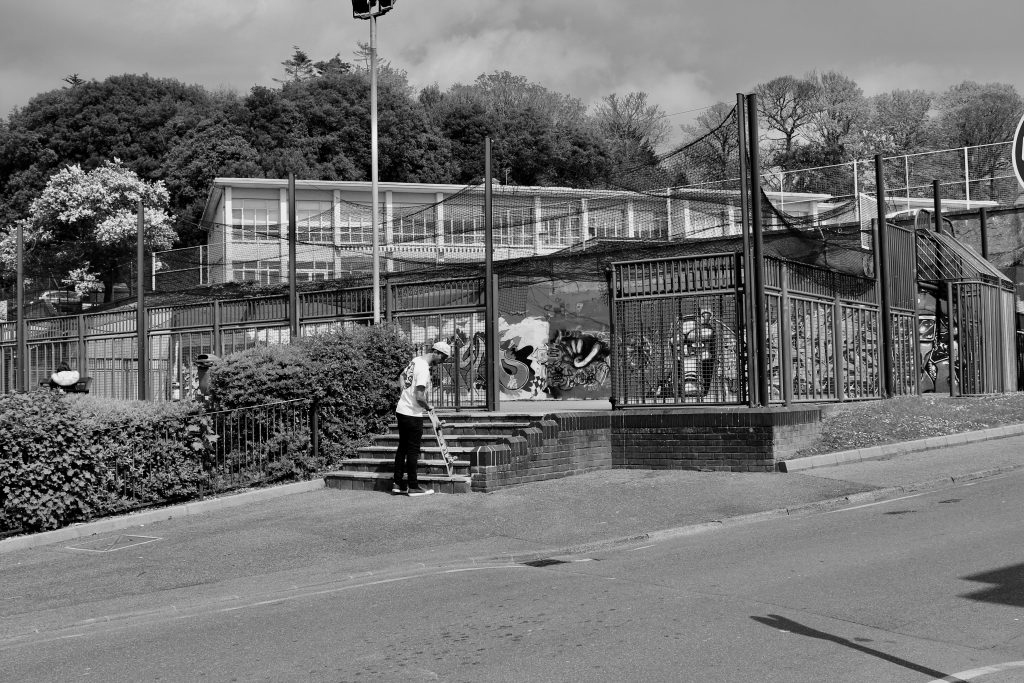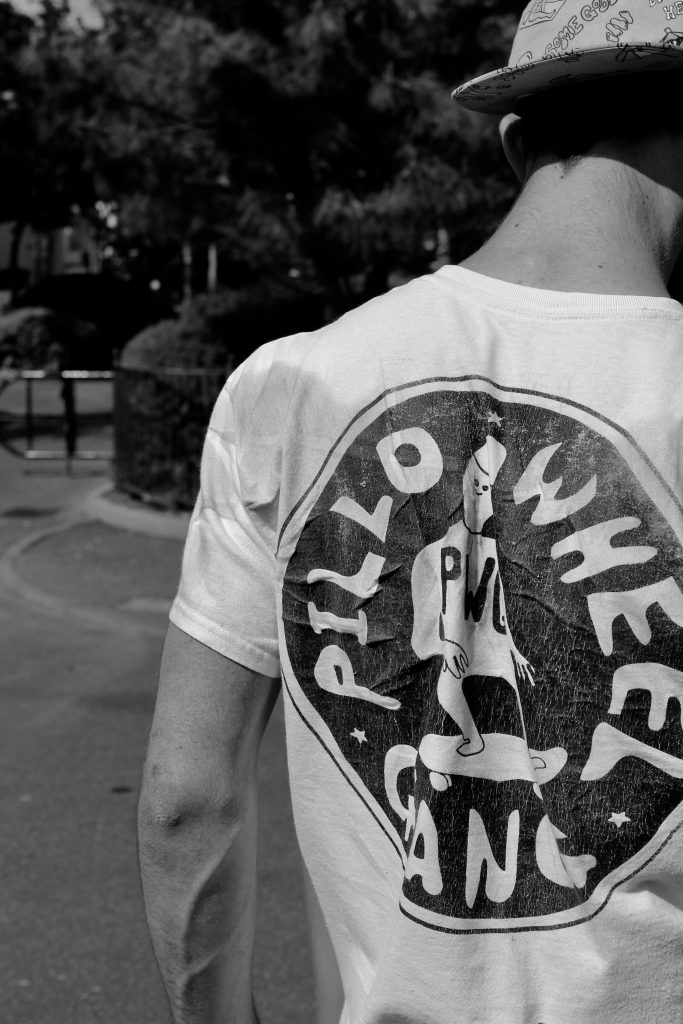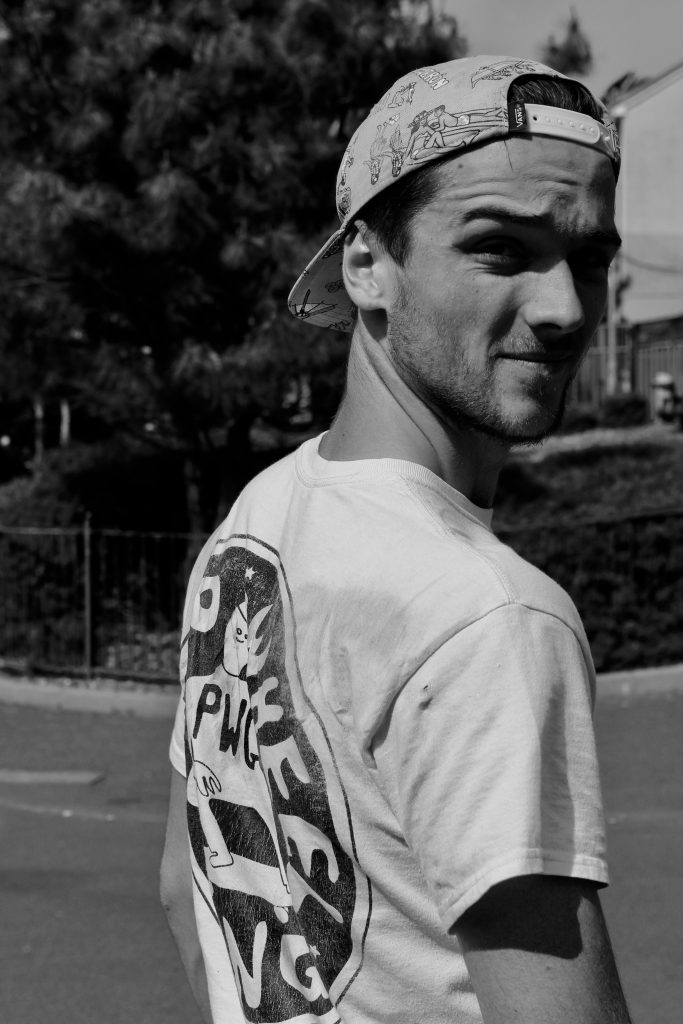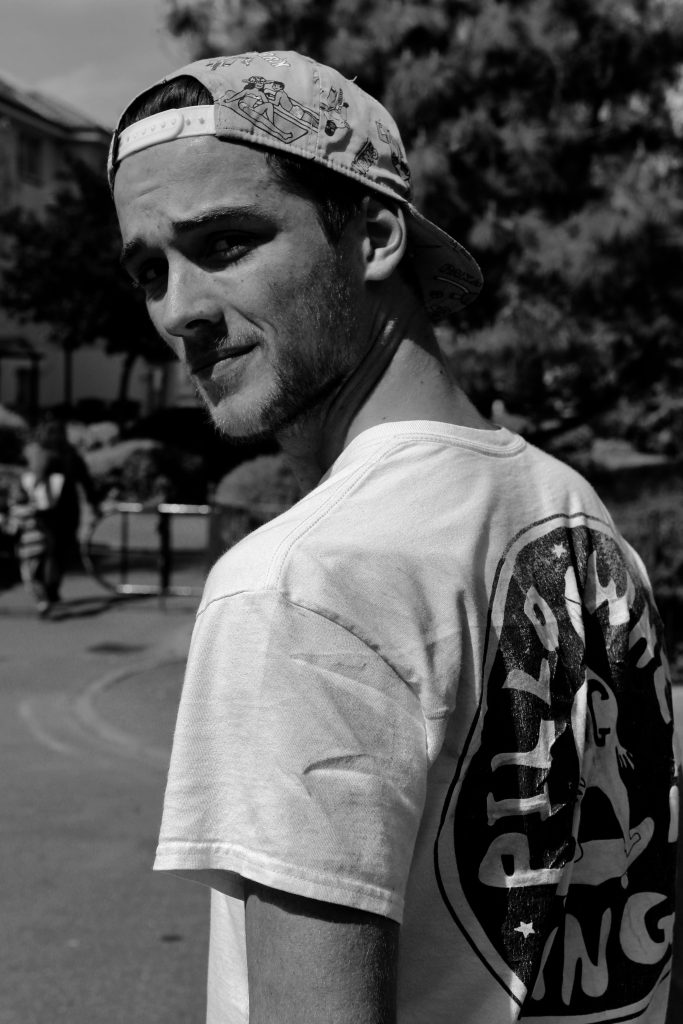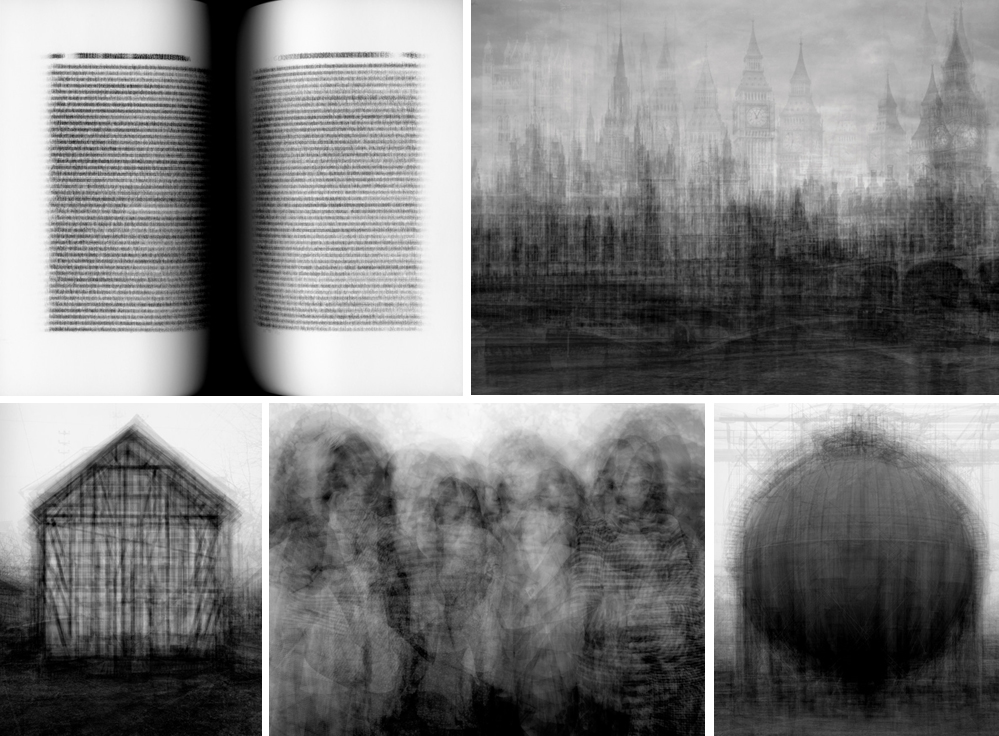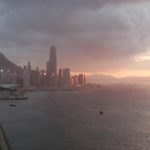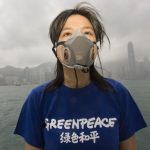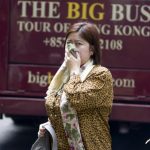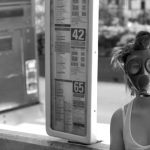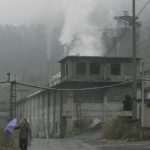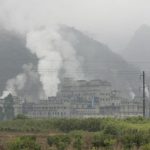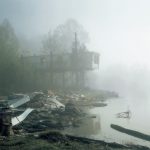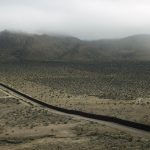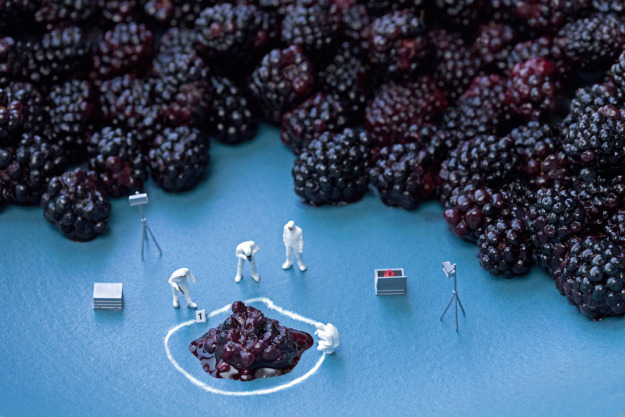
Daily Archives: March 15, 2017
Filters
IDRIS KHAN / STEPHANIE JUNG – overlaying images
Ibris Khan
Ibris Khan is a London based artist who focuses on an array of techniques and mediums from photography, painting to sculpture and film. He takes photographs from other sources as well as entire books and overlays them to create these compelling and abstract black and white images. His work evokes a very intense form of energy. The huge amount of layers creates a very provocative sense of texture. His photographs also reflect something spiritual with their use of movement and ambiguity.
Stephanie Jung
Stephanie Jung is a photographer based in German who as a passion for experimental photography using overlay and montage techniques. She takes her own photographs of places shes traveled and overlays them together. She picks places that stand out to her where she is really compelled by the ambiance and environment. Her work is a reflection of lost moments that cant be taken back as well as capturing the energy of somewhere such as a bustling city or eerie country road. Her work really emphasizes a sense of energy created by city environments which is also emphasized by the vivid colours used. Similar to Khan’s work, her use of overlay techniques gives a new sense of life to the image evoked by the intense textures that run through the image.
“My work is a lot about everyday scenes from a city, I take the images during a walk through the cities. I do not plan to take images from a special motive, it happens very spontaneously, I find beauty both in calm and busy moments, as I think both represent life at its best.” – The Phoblographer interview
Another view of Paris
I was really drawn to the photograph above by Jung which features a view overlooking the city in Paris. For this photograph she took various photographs moments apart, which evokes the movement of the cars as they drive up and down the road. The photographs features a very artistic colour scheme with its intriguing grey and yellow sky line contrasted with the blue buildings and vivid streak of red from the lights.
This was taken in 2009 on top of the Arche de Triomphe, watching Paris at night with my friends. The view was amazing, the La Defense district at the back, and the road in front with all the cars rushing from one place to another. It’s my favorite image because of the warm lighting and the coloured lights of the cars. –COOPH interview (2014)
Both artists use this technique to add energy into their work. The strong use of texture give both artists work a very crowded effect. Jung’s work evokes the atmosphere of her environment with its use of scenery and vivid colour and bold use of colour scheme, her work also reflects a romantic influence with the use scenery and colour, which evokes beauty. Khans work on the other hand is a lot more conceptual, the often indistinguishable shapes evoke something eerie or ghostly, his work is a lot more subtly compared to Jung’s chaotic landscapes. I like Jung’s use of rich colours and textures to make her work evoke a sense of energy and an exaggerated ambiance into scenery of her photographs which is something I plan on incorporating into my own work.
The Textured Moments of Stephanie Jung
Stephanie Jung’s Layered New York Photos Convey the City’s Chaos.
Shoot one – One with
My first shoot took place at St Catherine’s woods which is in my opinion one of the best locations in Jersey to enjoy the environment around you. St Catherine’s woods is an area of woodland almost untouched by man. This made the location perfect for the images I have recorded below. The concept of the shoot was to show how man has become one with the woodland, my images showing the subjects almost blending in to the landscape. In my opinion this gives the landscapes more meaning because in this world we are the ones who preserve the nature but we are also the ones who destroy it, but in my images the subjects are just becoming one with the nature. I also believe the images show the natural beauty of the island we live on, but the use of the black and white could be a conceptual idea that we live in a dark time besides the natural beauty.
 This first image was taken on the small dam at the start of St Catherines woods. The two subjects are walking along the wall to take a picture across the lake. I like this image because the contrast works well with the great amount of natural light being used. The light allows the water to reflect the trees around the lake giving the image more texture. I have made sure that the wall the subjects are walking on is in the centre of the image so that I can use the rule of three to make a better image. For example in this image the subjects in the middle, the lake on the left and the right side of the dam and the trees on the right. The concept of this image in particular is to show how what man has built divides the natural beauty from what we have created.
This first image was taken on the small dam at the start of St Catherines woods. The two subjects are walking along the wall to take a picture across the lake. I like this image because the contrast works well with the great amount of natural light being used. The light allows the water to reflect the trees around the lake giving the image more texture. I have made sure that the wall the subjects are walking on is in the centre of the image so that I can use the rule of three to make a better image. For example in this image the subjects in the middle, the lake on the left and the right side of the dam and the trees on the right. The concept of this image in particular is to show how what man has built divides the natural beauty from what we have created.  This is my favorite image from the shoot (1). The reason I believe this is the strongest image is because the environmental portrait has a strong composition. The natural light causes a blurred reflection of the subject in the water which created the effect of him blending in with the reflections of the trees around him. In the photo the subject is taking an image of the environment around him because he believes it is a particularly sublime location to be in.
This is my favorite image from the shoot (1). The reason I believe this is the strongest image is because the environmental portrait has a strong composition. The natural light causes a blurred reflection of the subject in the water which created the effect of him blending in with the reflections of the trees around him. In the photo the subject is taking an image of the environment around him because he believes it is a particularly sublime location to be in. 

Stephen Gill
// H E L L O S T E P H E N //
“Stephen Gill (1971), is one of the most interesting emerging photographers of the British scene. Photojournalist, visual poet, anthropologist, sociologist, alchemist, his series hybrid conceptual and documentary photos through obsessive explorations of different themes.”
The series “Talking to the Ants” presents a collection of images composed as doubles but within a single shot. By arranging objects inside the camera or one the lens, traces of coloured film, small bugs and other miscellaneous are left on the final film.
“Stephen Gill’s body of work is an enigmatic, multilayered archive of photographs”
Producing a range of project pieces, the self taught photography tends to shoot in and around London. Subverting expectations of areas with traditionally negative connotations, Gill’s work highlights colour and hidden experiences within the city. His photographs shift attention to the forgotten parts of the city, showing the neglected and the left behind. Labeled as an adventurer of the urban, he is an explorer both literally and in terms of his photographic experimentation. He opens a truly unique perspective of the world to a growing audience looking in on ordinary urban life.
“In addition to the idiosyncratic choice of subject matter, Gill experiments widely with film development and photographic processes. He has buried photographs in the ground, only to re-photograph them once again; he has dowsed film in energy drinks; he has immersed prints in water. In the more recent series, such as Talking to Ants, Gill began dropping objects collected from his surroundings directly into the camera before loading the film. This way, he is getting that much closer to depicting his subject matter and experience of a place in the final work. The outcome is unpredictable. The resulting images are messy and blurry, but they are also beautiful and deeply evocative. It is satisfying to see photographic work that is not crisply digital and perfectly executed. Instead, Gill’s images retain the tactility and randomness of the real world.”
The above section is taken from an article exploring Gill’s photographic techniques and in particular his more extreme methods of experimentation such as burying photos and spilling acidic drinks on film. What this shows is the willingness to take risks and play with the chance of loosing. There are always risks working with film but the collection below shows some of the outcomes available with patience and a lot of careful preparation. The coloured sections on the images particular appeal to me aesthetically and appear almost scientific in their composition. When first looking at this project with a friend, we debated the idea of images being burnt, spilt on or ever microscope images being placed over the top. Microscope slides with small compositions on were also an option we discusses but attaching items to the physical camera – even if it is a plastic ‘toy’ camera in this case – was not something which even occurred to us. There is something about these abstract images that inspires a personal experimentation in a similar style. What could be done to enhance and encourage positive perceptions of neglected areas locally? Could this be done with people and portraiture?

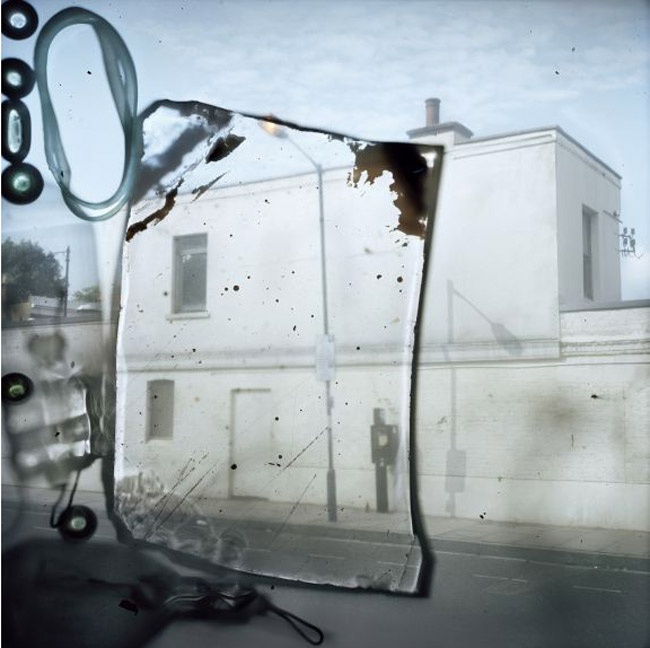
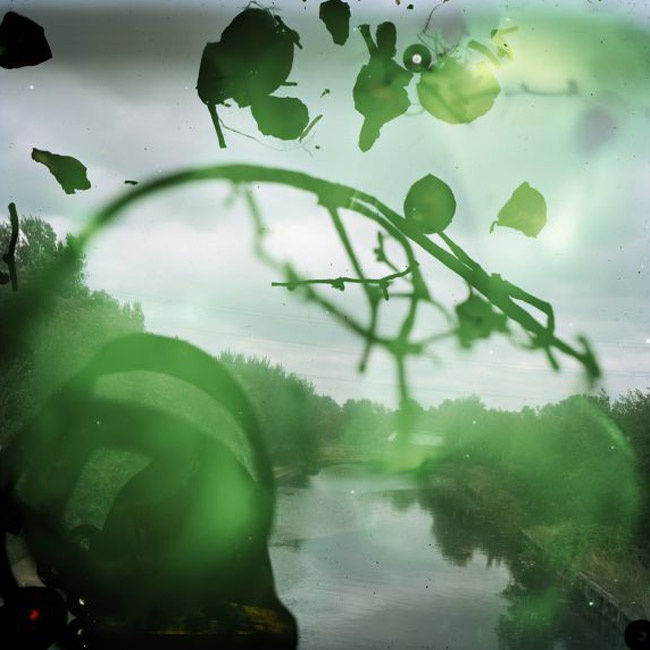
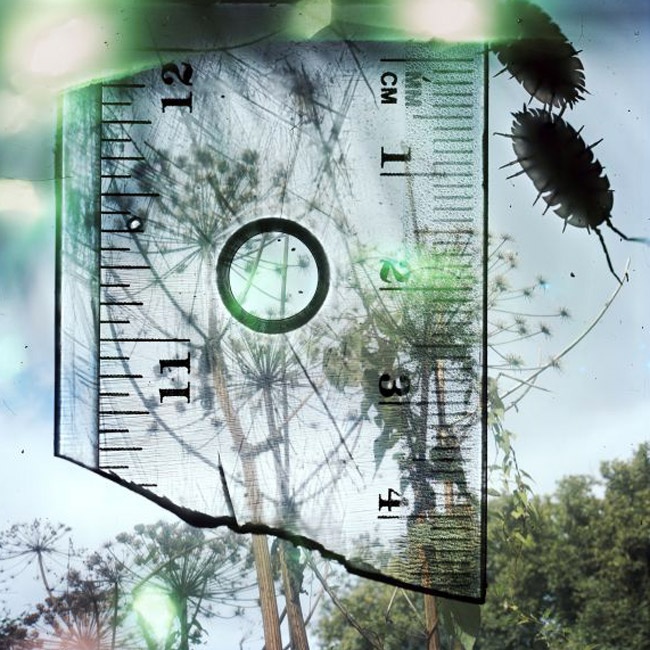
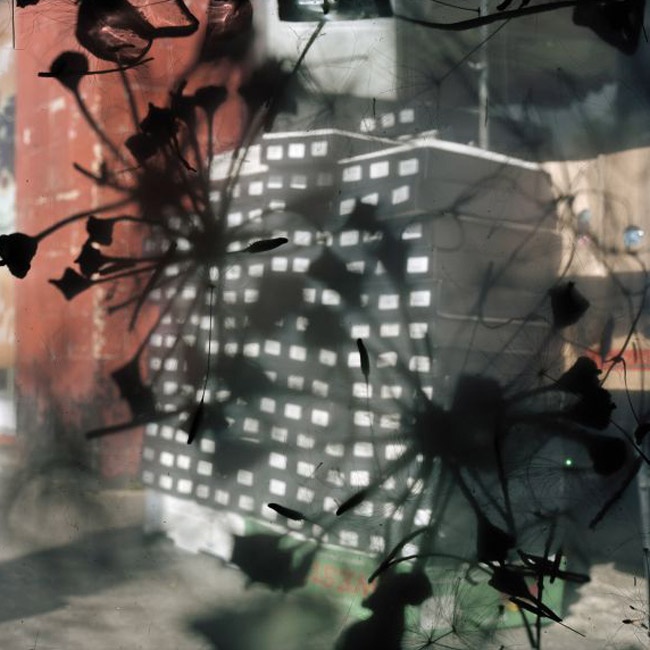
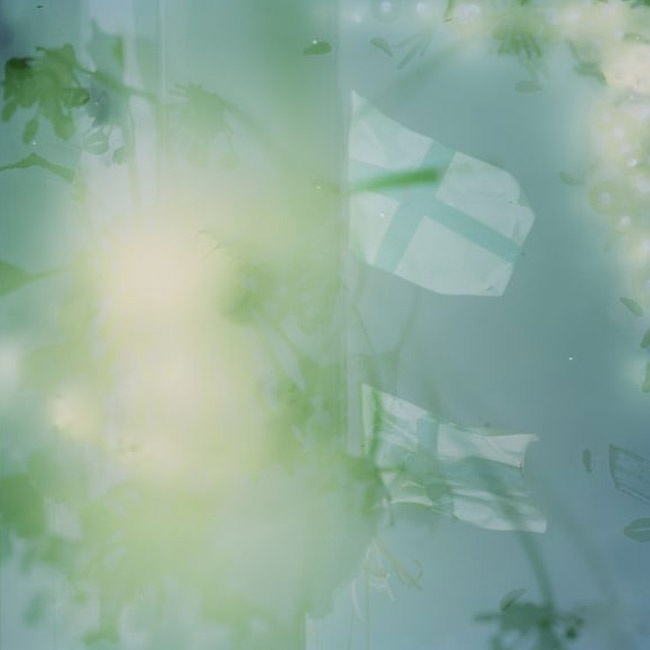
Alex Hofford
His blog: http://www.alexhoffordphotography.com/
Alex Hofford is a photojournalist who is based in Hong Kong, he has lived there for over a decade now. He uses the city as a base to cover stories in Greater China. He is also a regional representative for the European Press-photo Agency (EPA). He is British and has now a young family .
Since he arrived in Hong Kong, he has carried out over a hundred editorial assignments across the region as well as having worked in Asia but also in Middle East and Africa.
His works focuses on Environmental issues, he has done many assignments in the Pacific Ocean with Greenpeace, covering the problems of Marine Pollution, shark fining and over-fishing. His work is currently focusing on toxic e-waste, air pollution and solar power problems in China.
My opinion: His project on Air pollution relates to my idea of photographing the stages of pollution using a mouth and nose mask and a gas mask. I like that he focuses on very real issues which are affecting the real world in present time. Not many photographers focus on the environment but rather people instead which i think is boring after a while but nothing changes. People in undeveloped countries will always go through the same cycle of being born, getting ill from bacteria then dying. No amount of images will change the cycle and charities don’t seem to do much anymore. Whereas Alex Hofford photographs issues which the whole population of China and the world can change with simple changes such as walking and taking public transport instead of driving 5 minutes to the shop. The images he creates are different every time, they capture the eye as some are shocking to look at such as the Gas Mask images he created in collaboration with Clean Air Network.
Clean Air Network Website: http://www.hongkongcan.org/hk/
i want to change the world, i want the trees to grow again and the planet return to it’s full health but every government and rich boy is working against every person who wants to make a difference due to money. They ignore the warning signs because their is opportunity to earn 15 million in the next building project. Earthquakes caused by quarry explosions get blamed on tectonic plates when they aren’t even close to that country. Acid rain get’s blamed on air pressure and the increase in volcano explosions, tsunami’s, tornadoes, and hurricanes also get blamed on simply air pressure but what is causing this ‘air pressure’? Well this is due to the constant increase in Carbon Dioxide and Nitrogen, the increase of global warming and the increased amount of oil accidentally spilling into the sea with the government not carrying and talking blankly to the media saying they are doing everything they can. They then return to their 5 million pound home and get waited on hand and food whilst those who care and walking in oil and rescuing animals covered in oil. They wouldn’t dare dirty their handmade suits.
His Images:
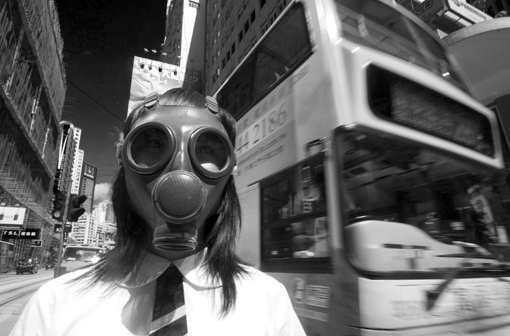
Alex Hofford created this image with a student to protest against the road side pollution caused mainly by buses. This image is really well constructed as the main point of the image is complete focus and the second point which is the bus has motion blur which i think it really effective at drawing our attention towards the student with the gas mask. In china, they do not actually where gas masks, they were mouth and nose masks instead but at the rate the pollution is increasing, within a decade they may have to wear gas masks to protect themselves against carbon dioxide poisoning. The composition of the image is not very good quality, however it is meant to be messy and not perfect like a sunset photo because it is portraying a serious message. That if we do not control our pollution, our future, our children’s futures will be spent in gas masks. However, i think how the sky has been darkened to make the student, bus and buildings more prominent in the photo works really well as it draws our attention into the centre of the photo. Also the outline of the bus acts as a frame for the students head which makes the viewers eyes drawn to her. Another aspect of the image which is quite interesting, is that we cannot see her eyes very clearly and i think that works in Hofford’s favour as it adds tension to the image as we can not see her facial expression which keaves us guessing to what it is. Without any context, you can understand what this image is about but it also leaves many things up to the viewer’s imagination such as who the girl is, why she is standing next to a bus and why the photo is in black and white. This image relates to the Realism Art movement in the 1850s in which realists rejected Romanticisim which dominated French literature. They were against the exotic subject matter and exaggerated emotionalism. Realism’s purpose was to “portray real and typical comtemporary people and situations with truth and accuracy”. Alex Hofford wanted to portray the truth of students protesting against road side pollution with the use of gas masks. He did not set up this image, he wanted only there to capture what was happening in that moment.
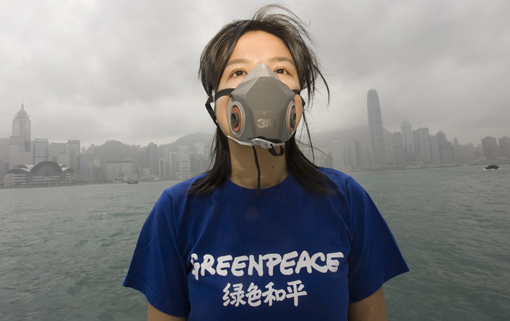
This is a similar photo to the one above taken by Alex Hofford. This photo is of a student activist who is protesting against the high levels of pollution in Hong Kong by wearing a gas mask. She is a symbol of the environmental group Greenpeace. She is standing most likely on a boat in front of Hong Kong who’s sky is thick with smog. The composition of this image is interesting because the background is very dull and boring but she is wearing a bright blue t-shirt and you can tell a flash was used as her face is brighter than it should be when there is no sun in the picture. I think this draws our attention towards her face and the gas mask which is the most crucial part of the image. The only problem with this image is that the skyline is slanted and i think if it was straight the photo would look much more symmetrical. I think the contrast in colour is meant to represent the stand that many Chinese people are taking to try and make people aware of the dangers of smog and the high levels of pollution in the city. The blue of the shirt may represent the colour the water should be but it is grey instead and it represents that the sky should be blue not grey and full of cloud every single day. Hofford attempted to use the rule of three as she is almost in the center but i think the flash on only her face partly ruins the consistency of the image. This image again relates to Realism which is the art movement of rejecting Romanticism which dramatized and over exaggerates emotions in paintings. Realism shows the raw truth of events and use the camera as a tool to portray it. They rarely manipulated images or used Tableaux photography to portray emotion. I think this is Alex Hofford has done, he has captured an image of an activist protesting against the high levels of pollution in Hong Kong and the only manipulation of the image is the flash. However, it has to be used due to the amount of smog making the daytime seem more like late evening.
Specification shoot idea 1
Shoot Idea 1
After looking at the work of Richard Misrach I wanted to explore the effects of people on the landscape band rather focusing on the strongly political, physical effects, focus on the beauty evoked by these shifts and changes. I also wanted to look at my own environment that I live in which will add a more personal effect in my work. I would also like to look at the diversity of where I live such as in between the different parishes in jersey and how they are different, but still showing the influence of Richard Misrach’s work and his focus on human effects.
The photos will be of country landscapes such as fields as well as roads and houses where there is a clear mix of nature and urban. The photographs wont feature any people, only the effects of people on the environment, similar to the work of Misrach. I will also focus on open spaces and areas that feature an interesting sense of diversity. For my first shoot I plan on taking my camera through the roads around my house and focusing on the effects of agriculture and transport, which is a big part of the landscape and how it is shaped where I live. Agriculture is naturally a big part for the more suburban areas of jersey which is shown by the vast amount of fields through the island. I plan on focusing on how this has shaped the land and how the surrounding nature and environment works and fights against it.

I plan on picking a time of day which would give softer light, similar to that of Richard Misrach, possibly either early morning or early evening so the lighting isn’t overly harsh. Another part of Jersey is the focus on beaches in the island, which I also plan on looking at in a alter shoot. These will all be taken during day time when there is sunlight.
I plan on also looking at techniques such as long exposure for areas with low light which may be the case as working with natural light can be tricky and I often only have a short time to work with. Inspired by the work of Misrach, I want to convey a sense of mystery and narrative based around the landscape and how it has been changed as evoke a very poetic aesthetic similar to a romantic painting.
Shoot One: Evaluation



Shoot One: Comparison to Archival Photographs






Theme 3: Miniature Scenes
Miniature Scenes
One of my first ideas that I have held on to for a long time is to create scenes by arranging small figures into their own Tableaux style scenes.
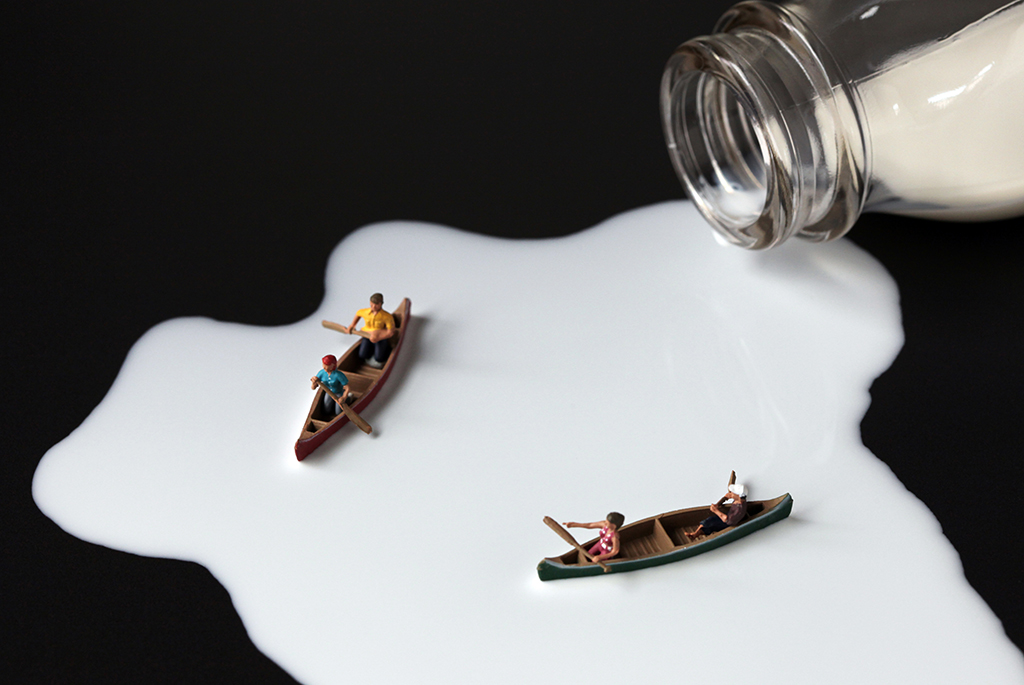
The surreal scenes often use some regular sized object to have the figures interact with. The example above shows one of these concepts. It is an interesting way to create Tableaux images and means that the artist must think about how to represent this environment, and to create it. Unless the artist has the ability to create their own figures they will also be limited by the different positions of the figures that you can use, there is a real need to plan ahead with the shoots. I like the interpretation of environment in these images, looking at full sized scenes and interpreting them in miniature is a really interesting concept. The images can have different meanings and connotations, and can be used to express certain feelings and have underlying tones, often though they are just a bit of fun.
Generally shot with a shallow depth of field there are few main elements, and several extra elements that support the scene. In the two images above the regular sized objects are not in singular, this makes it easier to understand the comparative size of the objects and figures. The surrealism of the images is expressed due to the difference in size between the objects and figures, the idea of being shrunk down to a miniature size, but still carrying on with normal ife is very interesting . I do not know if I will pursue this but the concept is still interesting and if I do not carry on with the water concept then this is something that I could carry on with, however it could be challenging because of the lack of context and amount that I could do.
Environment – Shoot One
As an initial shoot, in the attempt to explore my concept of environment, I decided to photograph a friend of mine, Zac, who skates. In the process of photographing Zac, I would ultimately be investigating an area of my past which was once highly significant, my skateboarding environment. Skateboarding to me, as well as my friends, was more than just a sport, it was a lifestyle. Something that became routine, as we did it everyday.
Within this shoot, my intention was to recreate the type of day I would’ve once lived, as a skateboarder. I have used Zac as an example of this. We used to venture to a location, suitable for skating and spend the day fluctuating between skating around and doing tricks, to sitting about and going to the shop etc.
I think this period of time, within my life, was where I believe I became my most independent, as well where I found myself and something that I fell in love with. Therefore my environment and my perception of it had changed, from when I was younger.


